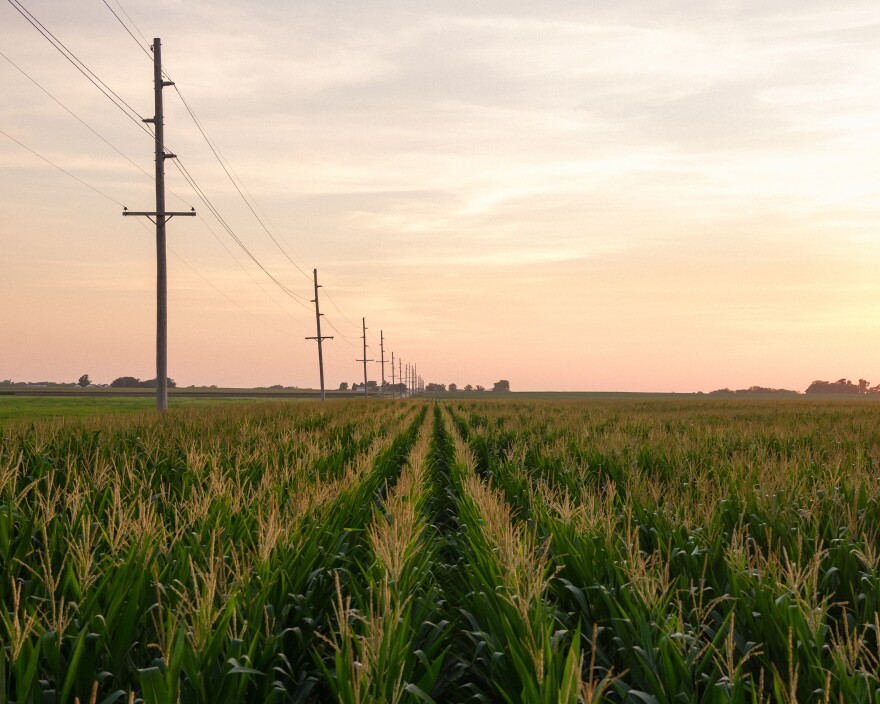As the temperature in Grand Island, Neb., soared to 91 degrees that July day in 2018, two dozen farmworkers tunneled for nine hours into a thicket of cornstalks, snapping off tassels while they crossed a sunbaked field that spanned 206 acres — the equivalent of 156 football fields.
When they emerged at the end of the day to board a bus that would transport them to a nearby motel to sleep, one of the workers, Cruz Urias Beltran, didn't make it back. Searchers found the 52-year-old farmworker's body 20 hours later amid the corn husks, "as if he'd simply collapsed," recalled a funeral home employee. An empty water bottle was stuffed in his jeans pocket. An autopsy report confirmed that Beltran died from heatstroke. It was his third day on the job.
Beltran is one of at least 384 workers who died from environmental heat exposure in the U.S. in the last decade, according to an investigation by NPR and Columbia Journalism Investigations, the investigative reporting unit of Columbia Journalism School. The count includes people toiling in essential yet often invisible jobs in 37 states across the country: farm laborers in California, construction and trash-collection workers in Texas and tree trimmers in North Carolina and Virginia. An analysis of federal data from the Bureau of Labor Statistics shows the three-year average of worker heat deaths has doubled since the early 1990s.

CJI and NPR reviewed hundreds of pages of documents, including workplace inspection reports, death investigation files, depositions, court records and police reports, and interviewed victims' families, former and current officials from the Occupational Safety and Health Administration, workers, employers, workers' advocates, lawyers and experts.
CJI and NPR also analyzed two federal data sets on worker heat deaths: one from the Occupational Safety and Health Administration, the other from the Bureau of Labor Statistics. Both are divisions within the U.S. Labor Department.
Among the findings:
Current and former OSHA officials acknowledge that the known death tally is a vast undercount. The agency mostly relies on companies to report worker fatalities after they occur, but not all do so.
CJI and NPR reporters analyzed worker heat deaths recorded by OSHA between 2010 and 2020 and compared each incident day's high temperature with historical averages over 40 years. Most of the deaths happened on days that were unusually hot for that date. More than two-thirds occurred on days when the temperature reached at least 90 degrees.
Yet no worker should die from heat, said Ronda McCarthy, an occupational health specialist who directs medical services at the health care provider Concentra, in Waco, Texas. McCarthy spent seven years educating her home state's municipal workers about heat, which reduced cases of worker heat exhaustion and similar conditions there.
"Heat illness should be considered a preventable illness," she said.
No federal heat standard
OSHA has known about the dangers of heat — and how to prevent deaths — for decades. In 1972, the National Institute for Occupational Safety and Health (NIOSH), part of the U.S. Centers for Disease Control and Prevention, studied the effects of heat stress on workers in the U.S. and recommended criteria for an OSHA heat standard. Under the proposal, employers would have had to give employees one break every hour and offer ready access to water. New workers would have received extra breaks so they could acclimate to strenuous activity in the heat.
NIOSH has refined these safety measures — first in 1986 and, again, in 2016 — but OSHA has not acted on them because of other regulatory priorities. This year, for the first time, OSHA is officially considering a heat standard by putting it on its regulatory agenda. James Frederick, OSHA's acting director, said it's a "priority" for the Biden administration.
"Occupational exposure to heat remains a very important topic," Frederick said in an interview with CJI and NPR. "We're focused on improving our efforts to protect workers moving forward."

Absent a heat standard, OSHA must rely on a 50-year-old regulation guaranteeing workers a "hazard-free workplace." OSHA does require companies to provide adequate water but not other heat-safety measures.
OSHA's own research shows relying on this general rule hasn't worked. A 2016 study by agency scientists found that some employers whose workers got sick or died from heat hadn't met basic water provisions. Most companies never offered rest breaks. Only one out of 84 total employers had a plan for building up its workers' tolerance for laboring in heat.
In 2011, four labor and public interest organizations, including Public Citizen, a consumer rights advocacy group, petitioned OSHA to issue a heat standard. They asked the agency for an emergency temporary standard because a new rule, the petition stated, "could potentially take many years before it's finalized and implemented."
David Michaels, then the assistant secretary of labor for occupational safety and health, who oversaw OSHA, denied the petition, arguing in a January 2012 letter to petitioners that workers weren't dying from heat at a rate that would justify a legal standard. Recognizing extreme heat's threat, he said most workers can "recover fairly quickly when the appropriate measures are taken."
Instead, Michaels launched a voluntary awareness campaign distributing posters and flyers that instructed employees on how to protect themselves. OSHA incorporated these precautions into a free bilingual phone app featuring government-issued heat alerts and advisories. The agency continued this campaign through 2013. Its principle message remains on OSHA's website today.
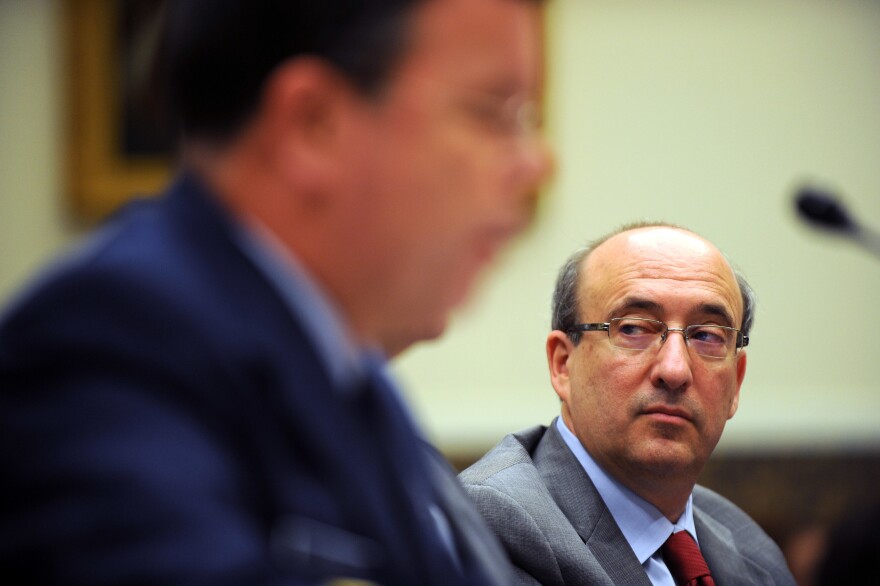
Michaels touted the campaign as a success at the time. The numbers are less clear. The number of workers who succumbed to heat topped 61 cases during the campaign's inaugural year, in 2011 — an all-time high. Another 65 workers would die from heat exposure in the ensuing two years, closer to the annual average for the decade, while the campaign remained an agency priority.
Six years after his petition denial letter, and after leaving OSHA's top post, Michaels changed his approach. In 2018, he joined Public Citizen and 131 additional groups in a second petition asking the agency to enact a heat standard. This time, petitioners cited NIOSH's updated guidelines and warned that "this warming trend will not only continue but accelerate."
In a recent interview, Michaels, now a public health professor at George Washington University in Washington, D.C., said the agencywide consensus was that climate change would worsen the problem. But the rule-making process at OSHA is "so difficult" and the industry opposition so formidable that adopting a heat standard "became a bridge too far," he said. He has come to believe a standard is essential.
"We know that heat kills," Michaels said. "And if we don't have requirements, heat will kill more workers."
Search and rescue
A standard that included water, rest, shade and acclimatization could have saved Beltran, an experienced farmworker who traveled more than 1,300 miles from San Luis, Ariz., to the heart of America's Corn Belt to pull tassels off corn plants for Rivera Agri Inc.
The day he went missing in the fields on the outskirts of Grand Island, the temperature — with humidity — felt like 100 degrees. Joseph Rivera, the company's owner, placed an emergency call to authorities shortly after 5 p.m. Beltran was in the field but didn't come out with the other workers, he told the 911 operator.
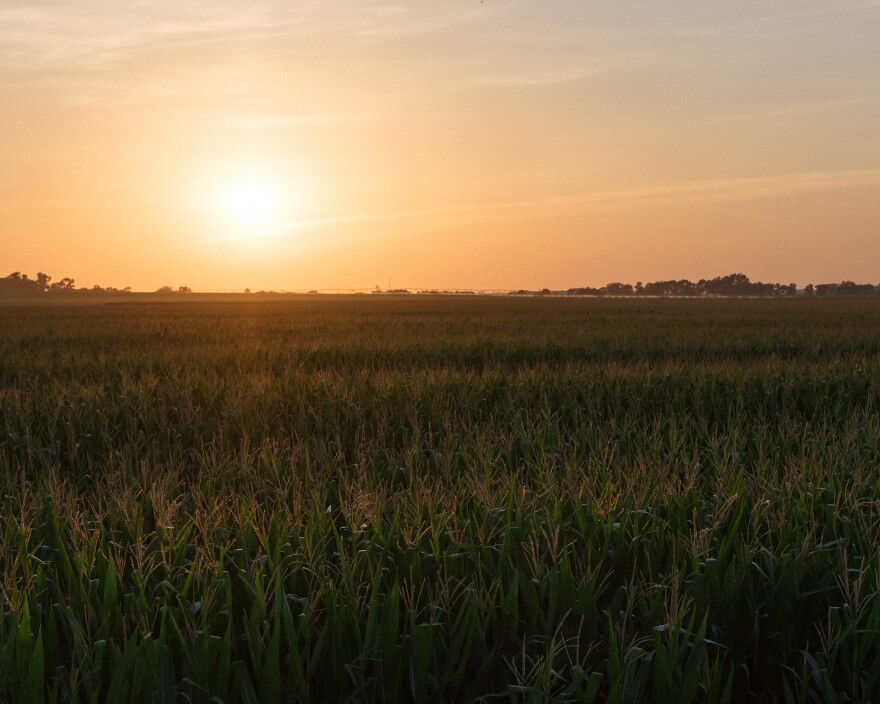
The call set off an elaborate search-and-rescue mission in the central Nebraska city of 51,000. One volunteer flew a Piper Cub airplane low and slow, on the lookout for the orange safety hat atop Beltran's salt-and-pepper hair. Another manned a helicopter circling the sea of stalks until the chopper ran low on fuel. At sunset, a Nebraska State Patrol plane with thermal-imaging equipment scanned for a sign of Beltran's body temperature, but since the plants and soil also were emanating heat, he went undetected.
The following morning, as the temperature hovered in the 90s, the Red Cross opened a temporary cooling station with air conditioning for the 100 volunteers who joined the search. Shortly after noon, someone spotted Beltran's body, facedown in the husks.
Two months after Beltran's body was shipped to his family's home in Mexico's Sonora state, an OSHA inspector visited Rivera Agri as part of the agency's investigation into the death. OSHA inspection records show the company didn't deploy the kind of preventive measures that a heat standard would have required. Rivera Agri did not ensure that employees took enough rest breaks in shade, drank sufficient amounts of water and adapted to their grueling work, the records show.

"These actions were left to the employees to manage themselves," the inspector wrote in a nine-page citation.
OSHA found that the "moderate lifting and bending" and "pushing and pulling" that Beltran had performed in the heat had contributed to his death. It cited Rivera Agri for a violation and proposed fines totaling $11,641. The agency also ordered the company to train employees on the symptoms of heat illness, among other safety measures. Rivera Agri agreed to OSHA's conditions, and the fines were reduced to $9,500, records show.
Angela Rivera, who runs the farm labor contracting business with her father, Joseph, said the company has worked to fulfill the agreement. Today, it contracts with a farmworker-rights group to educate employees on how to respond to heat emergencies. Near the cornfield, it sets up extra water stations and has canopies for emergency shade.
"We've been in this business for a long time," said Angela Rivera, who calls Beltran's death "an unfortunate thing."
"Every year we try to step it up," she said.
Joseph Rivera said supervisors now monitor the heat on their cellphones and pull detasselers from the cornfields whenever it gets too hot — part of a heat-stress plan the Riveras created after Beltran's death. They hand out brochures explaining the new policy to every farmworker on their bus.
Not the first death
Beltran was not Rivera Agri's first heat-related fatality. In July 1997, a 39-year-old detasseler died of heatstroke under similar circumstances. Like Beltran, it was his third day on the job, and the temperature had spiked to 95 degrees. When he collapsed, the crew found him within two hours. But his core body temperature was 108 degrees — hot enough for the brain, liver and kidneys to shut down.
OSHA investigated his death but didn't impose penalties because then-OSHA Area Director Ben Bare determined there was no applicable standard. The lack of a standard leaves individual OSHA officials to decide whether a general violation applies to each death, creating a pattern of uneven enforcement in worker heat-death cases, records show.
CJI and NPR's analysis of worker heat deaths shows that, like Rivera Agri, 11 other companies have lost more than one employee. In five of the cases, OSHA investigated the first fatality and issued citations, only for another employee to die from heat. One of those cited was Texas-based Hellas Construction, which builds publicly and privately funded stadiums and other sports infrastructure projects across the country.
In July 2018, the week before Beltran died in a Nebraska cornfield, Karl Simmons signed on as a laborer for Hellas. At 30, with long braided hair and a shoulder tattoo bearing his mother's name, Simmons arrived at the sprawling Gateway Park in Fort Worth, Texas, ready to install turf.
On his second day on the job, Simmons, who had served in the U.S. Navy, took a lunch break and fielded a call from his wife, Precious. "It's just hot," he complained, according to a deposition she gave in a lawsuit filed by the family against Hellas. The five-person crew had already drunk all the water. Simmons returned to preparing the mixture to attach to the turf, shoveling gravel and adhesive chemicals into a mixer.
That afternoon — as the temperature topped 96 degrees — Simmons told his supervisor he felt hot, according to OSHA records. He complained about the heat two more times that day. Each time, he said he felt sick. At one point, he sought shade under a tree while his supervisor drove to a store to get water.
A passerby eventually spotted Simmons sprawled on the ground, facedown, and alerted the crew. His brother-in-law, Michael Spriggins, who worked alongside Simmons as a Hellas laborer, sprinted to his aid. He found Simmons gasping for breath, bleeding from his nose and mouth.
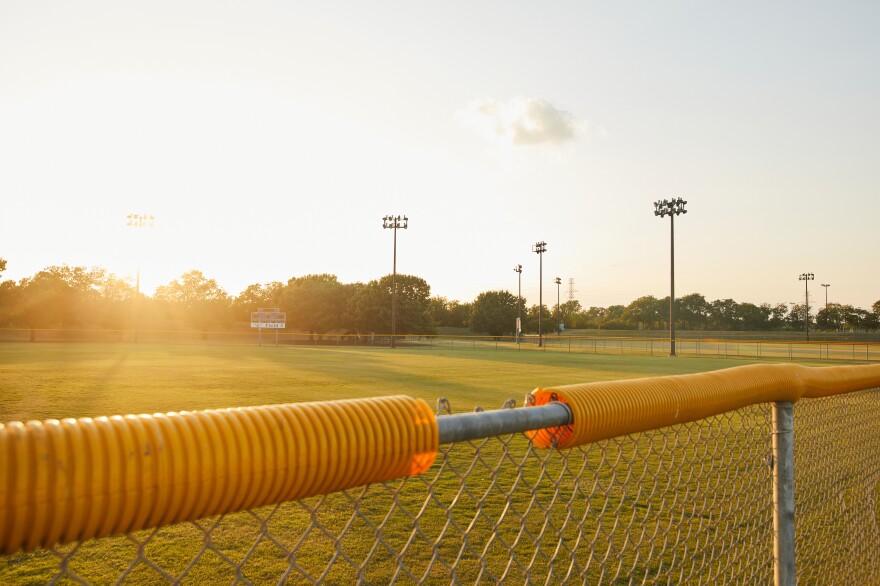
"It was a sight I ain't going to never forget," Spriggins said in an interview with CJI and NPR.
He called 911 and then placed a cool towel under Simmons' neck at the dispatcher's instructions. Simmons opened his eyes.
"It looked like he's gonna pull through this," Spriggins recalled.
Two hours later, Simmons was pronounced dead at a local hospital. Heatstroke, the autopsy report confirmed. He was one of at least 53 workers who have been fatally stricken by heat in Texas since 2010, CJI and NPR's analysis shows.
The next day, Jason Davidson, Hellas's chief safety officer, emailed more than 340 company employees, addressing the perils of laboring in extreme heat. It was at least the fourth written warning he sent in the summer of 2018, when 11 additional Hellas employees were diagnosed with heat-related illnesses requiring medical attention.
Dean Wingo, who oversaw the OSHA regional office that includes Texas from 2007 to 2012, said Hellas' hospitalization numbers suggest a worrying pattern. Serious heat-related illness involves everything from a heat rash to uncontrolled bleeding, according to medical experts. In its most severe form, heatstroke can cause multisystem organ failure that has lasting adverse effects. Wingo said he believes Hellas' record on workplace heat safety shows "poor" company management.

Hellas officials declined a dozen interview requests for this story and didn't respond to a list of 20 written questions from CJI and NPR. In its response to a wrongful-death lawsuit filed in July 2019 by Simmons' wife, the company denied that its conduct "rose to a level of gross neglect" or that it failed to provide a safe workplace.
But in December 2018, OSHA found that Hellas hadn't provided Simmons a workplace "free from recognized hazards" and cited the company for two violations, including failing to record Simmons' death in OSHA logs, records show. OSHA proposed a fine of $14,782 against Hellas for Simmons' death. The company earned more than $150 million in revenue that year.
As part of a settlement, Hellas agreed to implement "a more robust/detailed training program ... to prevent heat exhaustion and heat stress injuries." OSHA lowered the fine by nearly $2,000, to $12,934. That's higher than the national average fine of $7,314 for employers in such cases, according to a CJI and NPR analysis.
Hellas executives did not carry out the safety measures, records show. And OSHA never showed up at a work site to see whether the company was following the terms of the settlement agreement.
OSHA's regional office in Dallas, which investigated Simmons' death, declined to discuss the case.
OSHA data shows the agency reduced heat-related sanctions nationally by 31%, on average, after settlements. It cut the penalties in more than half of the 246 heat-death cases in which OSHA had proposed them.
Wingo said the only way OSHA can ensure that companies like Hellas keep their promises is to conduct follow-up inspections in person.
"I don't think it's excusable," he said. "When you've had a fatality, you go back."
On July 19, 2019, a year after Simmons' death, a second Hellas worker succumbed to heat — this time in Hondo, Texas, 42 miles west of San Antonio. At 6 a.m. that day, forecasters were promising a scorcher. The temperature would soar to 99 degrees, 3 degrees hotter than the 40-year average, the CJI and NPR data analysis shows.
Pedro Martinez Sr., 49, had been employed by Hellas for more than a year when he arrived for work at McDowell Middle School with his 22-year-old namesake. The father had gotten the son a summer job. At the time, Pedro Jr., also known as "Bruno," was between semesters at a college in his home state of Zacatecas, Mexico.
On the third day, the pair did cement work on the school's athletic field. They pulled out vertical rebar stakes using a device called a JackJaw, pumping a handle to wrench the stakes from the ground. As in the Simmons case, an OSHA inspection would later confirm that the area had little shade. Records show that the younger Martinez toiled for 10 hours before taking a lunch break at 4 p.m.
Nearly two hours later, he was working beside his father when he became overheated and ran off, hit a fence and collapsed. The father rushed his son to a local hospital's emergency room, where nurses placed ice packs around his body. But his core temperature was already 108 degrees, according to a police report. The official cause of death was heatstroke.
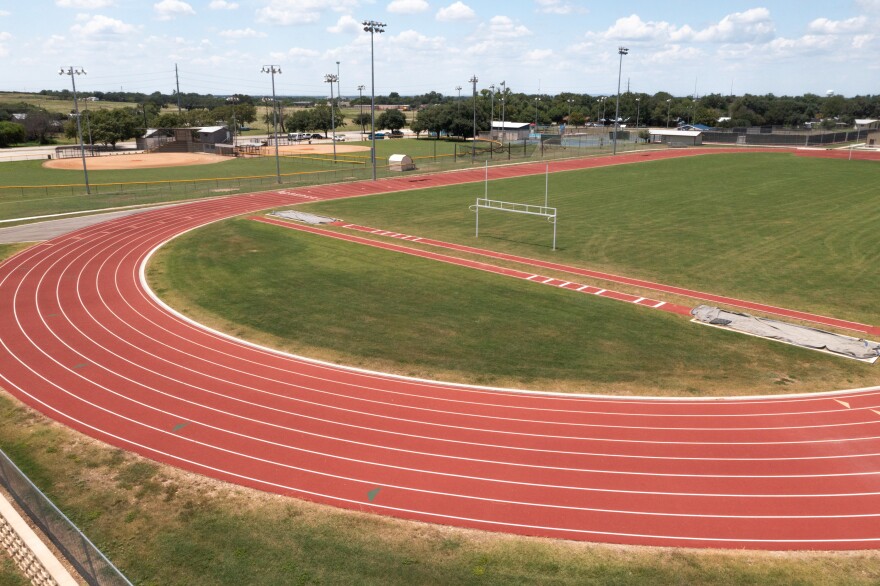
In December 2019, OSHA cited Hellas for a willful violation, the most serious category. The citation would have placed Hellas on a public list of "severe violators," reserved for repeat offenders. The agency proposed a penalty of $132,598 — the maximum amount OSHA could levy at the time.
One month later, Hellas challenged the citation, arguing it should be dismissed because OSHA didn't prove "the necessary elements of its claims." The Labor Department settled with Hellas in April 2020, cutting the fine in half and reclassifying the willful violation as five "serious" ones. This kept Hellas off the severe violators list. A revised settlement agreement required the company to create a heat-illness prevention plan, among other things. It's unclear whether Hellas followed through.
By May of last year, Hellas had paid the fine, and OSHA resolved the case. The agency's regional office in San Antonio, which investigated Martinez's death, declined two requests to discuss the case.
A state standard falls short
Besides Texas, the states of California, Florida and Arkansas have each recorded at least 14 worker heat deaths since 2010, according to CJI and NPR's analysis. Unlike most states, however, California has its own heat standard. Passed in 2005, the standard was later named after a 17-year-old pregnant farmworker, Maria Jimenez, who died from heat exposure while pruning grapes. The standard was the first to uphold the pillars of heat safety: water, rest, shade and acclimatization.
In 2015, after the United Farm Workers sued California's state version of OSHA, the agency tightened its standard. Cal/OSHA lowered the heat safety limit from 85 to 80 degrees and required companies to prepare for extreme heat threats on days hotter than 95 degrees. It also allocated more money and staff to enforcement.
Today, California's rule is widely viewed as the gold standard. The Labor Department should emulate it, said John Newquist, who served as assistant administrator in OSHA Region 5 in the Upper Midwest from 2005 to 2012.
"It's easy with California already adopting this thing for years," he said. "If you follow these guidelines, that works."
But OSHA data on worker heat deaths suggests the state's standard can fall short. The rule has led to a rise in heat-related enforcement actions by the state's Division of Occupational Safety and Health, known as Cal/OSHA, every year but 2010, 2014, 2016, 2018 and 2020, when the coronavirus pandemic affected such activities across the board. In 2019, for instance, the agency conducted more than 4,000 heat inspections and cited workplaces in nearly half of them. Still, the CJI and NPR analysis shows that California's yearly tally of worker heat deaths has remained steady over the past decade.
Some critics say the agency has yet to curb worker heat illnesses and deaths because of lax and uneven enforcement.
Garrett Brown, a Cal/OSHA inspector from 1994 to 2014, has investigated dozens of heat deaths and worked as a special advisor for a former Cal/OSHA secretary and as a part-time inspector until this year. He believes the agency can't "do what it needs to do" to protect the state's workers because of its chronic understaffing. Brown has documented staffing levels for years, charting the data on his blog, Inside Cal/OSHA. The figures reveal a tiny workforce — about 190 inspectors for 1 million employers responsible for 18 million workers. That's one inspector for roughly every 5,200 companies.
Brown said mismanagement and the state's inability to fill inspector positions have exacerbated the problem. As of July 31, at least 25% of nearly 250 Cal/OSHA inspector positions remained vacant. And that can make for dire consequences on the ground.
A firefighter's death
In California, where fires have been raging, the victims of heat-related deaths are sometimes firefighters.
In April 2015, just two months before California's standard was tightened, Raymond Araujo, one of 4,000 inmates who then served as firefighters for the state's Department of Forestry and Fire Protection — known as Cal Fire — was on a 2-mile hike in Banning, Calif., about 30 miles from Palm Springs. Winding through steep, often shadeless hills, the trail was part of the department's required cardiovascular training. On that day, the temperature climbed to 81 degrees, 10 degrees hotter than the 40-year average.
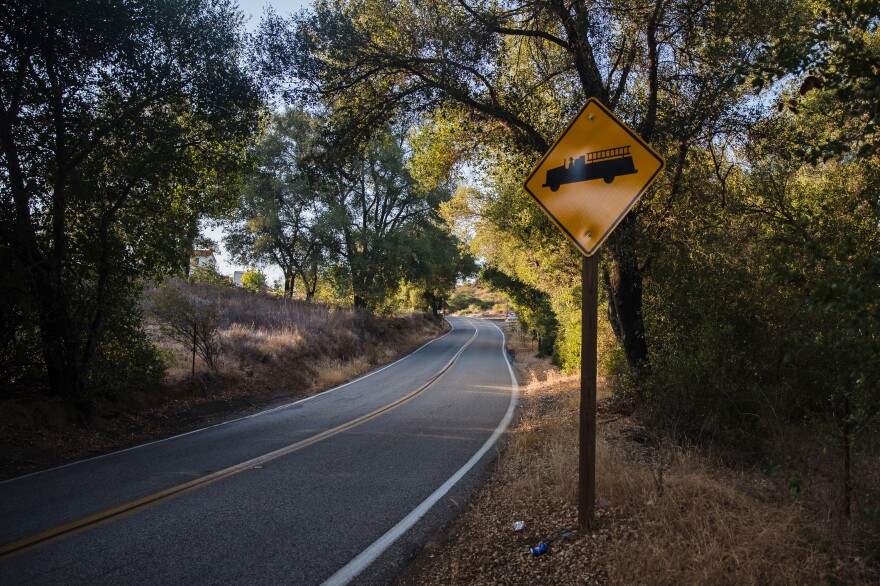
As the 12-member group neared the end of the exercise, Araujo stumbled and fell to his knees. His supervisor told his colleagues to help Araujo stand up and remove his fire gear so he could finish the hike. He walked another 30 feet and eventually collapsed.
The fire captain called for medical assistance, and a helicopter transported Araujo back to a nearby base camp, where he was pronounced dead, the records show.
While the Cal/OSHA inspection report named heat as a contributing factor in Araujo's death, the cause was "hypertensive cardiovascular disease," according to the autopsy report. As a result, Cal/OSHA deemed his death an accident.
Brown, the former Cal/OSHA inspector, reviewed the agency's report and said it was impossible for him to know why officials declined to investigate. He said the incident resembled many cases he had investigated — where workers suffered heart attacks because of the heat. Were he leading the charge, Brown said, he would have wanted to talk to eyewitnesses because the incident had all the hallmarks of a heat illness violation.
"One way to invalidate a fatality report is to decide that it's natural causes," he said, explaining that Cal/OSHA managers can look for ways to lessen understaffed inspectors' workloads.
Cal/OSHA declined CJI and NPR's requests to interview key officials for this story. But an agency spokesman defended Cal/OSHA's handling of Araujo's death, noting that the agency followed the Cal/OSHA medical unit's assessment in determining a cause of death.
Asked about the effectiveness of the heat standard, the agency said it regularly looks to enhance enforcement activities.
"We continue to evaluate the effectiveness of our programs and consult with various subject matter experts to determine what changes, if any, are necessary to improve health and safety," spokesman Frank Polizzi said in an email.
"It pays not to comply"
Just before 8 a.m. on July 28, 2019, Cal Fire firefighter Yaroslav "Yaro" Katkov set out with a fellow employee and a fire captain on a hike similar to the one that Araujo had made. The 28-year-old Ukrainian immigrant, who lived in Murrieta, Calif., a bedroom community near San Diego, had served as a reserve firefighter before being hired by Cal Fire in a seasonal role a year earlier.

On a standard training exercise, Katkov was asked to complete a 1.45-mile loop at Cal Fire's rural Station 16 in Fallbrook, a remote mountainous area halfway between Los Angeles and San Diego. As they traversed the loop, the captain and the co-worker noticed Katkov lagging behind the required 30-minute deadline to finish the hike. The two stopped on several occasions to allow Katkov to catch up, delaying their end time by 10 minutes. The temperature would climb to 88 degrees that day — 5 degrees hotter than the 40-year average.
The captain, Joe Ekblad, recognized that Katkov hadn't given his body enough of a rest yet but ordered the firefighters to repeat the exercise, according to the Cal/OSHA records. On the way up the steepest incline of the loop, Katkov stumbled and told his supervisor he felt exhausted — two telltale signs of heat stress. He collapsed on the hilltop, was airlifted to a hospital nearly two hours later and died of heat illness the next day.
"He loved the idea of being like a wildland firefighter," said Ashley Vallario, Katkov's fiancée. "It made him happy."
This time, Cal/OSHA investigated Katkov's death, interviewing eyewitnesses. The inspector detailed extensive failures by the captain, which led to his demotion. The agency found that Cal Fire had failed to stop the hike and seek emergency medical treatment even after Katkov had exhibited heat-related symptoms. Regulators levied a fine of $80,000 — almost five times the average Cal/OSHA fine of $17,000 in these cases.
Neither Cal Fire nor Ekblad responded to requests for comment.
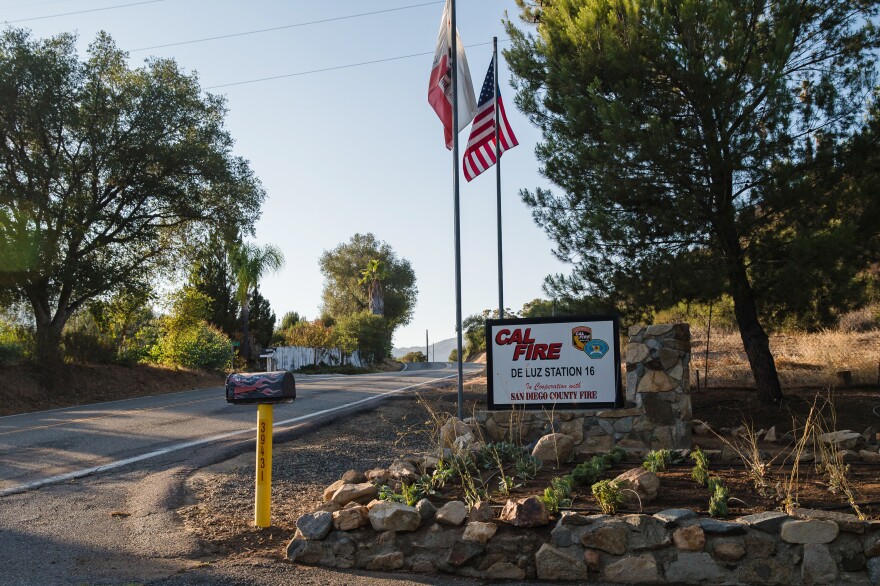
Such a large penalty shows what a fully enforceable heat standard can do, some experts say. But Cal/OSHA records suggest the regulators' stick has not come soon enough. Since 2012, at least four other firefighters have died during Cal Fire training hikes. All the firefighters but Katkov were inmates. No other case yielded sanctions.
Cal Fire's training processes, meanwhile, continue to put firefighters at risk. In 2020, almost a year after Katkov's death, another department firefighter was sickened by heat during a hike. That firefighter was rushed to the hospital and survived.
Ellen Widess, head of Cal/OSHA from 2011 to 2013, said she sees an unsettling pattern: Employers can brush off the cost of an agency fine. In many cases, she said, penalties have no effect.
"We've seen that the costs of [non]compliance are so cheap," Widess said. "It pays not to comply."
"It's going to be like this every year"
In the three years since Public Citizen renewed its petition for an OSHA heat standard, political pressure for such action has grown. In March, Rep. Judy Chu, D-Calif., authored legislation that would require OSHA to create a national heat standard based on NIOSH criteria and mandate employer training "to prevent and respond" to heat illnesses. The bill, co-sponsored by at least 57 House Democrats, is pending in committee. It marks the second attempt by federal lawmakers to establish a rule since 2019.
OSHA, meanwhile, said it will take the first step toward issuing a rule this fall. In October, the agency plans to publish a request for information from employers, occupational health specialists, climate scientists and workers on the viability of a standard. Frederick, OSHA's acting director, said the input could help the agency develop a regulation that applies to any industry in the United States.
"Heat hazards exist in many, many industries," he said. "We know that we have work to do with almost every industry to understand ... what the effect of heat hazards in their workplace is and how best they are putting in practices and controls to mitigate those hazards."
Already, former OSHA officials are anticipating industry pushback, particularly from construction groups.
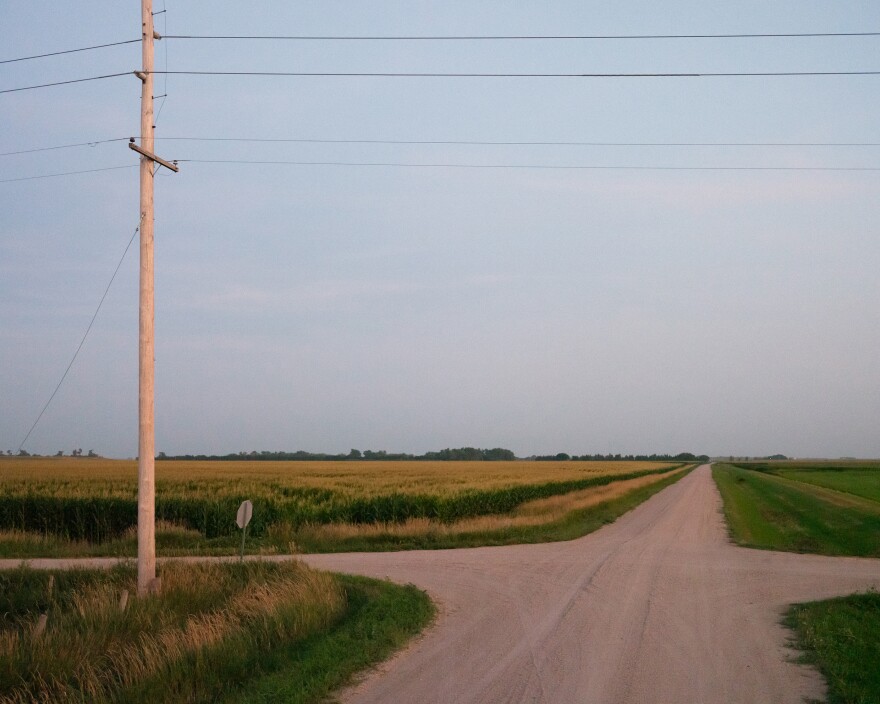
"Every time OSHA proposes a standard, [the] industry accuses OSHA of killing jobs and destroying whatever industry is going to be regulated," said Jordan Barab, a former deputy assistant labor secretary who helped shepherd two chemical-exposure standards through protracted rule-making processes. "That would probably follow with a heat standard."
Some states have decided not to wait. In June, as an unprecedented heat wave blanketed the Pacific Northwest, Sebastian Francisco Perez moved irrigation pipes at a nursery in Willamette Valley, Oregon. Perez was found dead at the end of his shift. Preliminary information suggests the incident was heat related, but Oregon Occupational Safety and Health (Oregon OSHA) has yet to make a determination, according to Aaron Corvin, a spokesman for Oregon OSHA. Ten days later, the state enacted an emergency heat standard.
Back in Grand Island, Neb., where the average high temperature has increased 2 degrees since the 1990s, the intensifying heat is not lost on Joseph Rivera. As a younger man in the fields, he remembers there were hot and humid days. But now the heat is so extreme, he said, "you get these hot days that just come up over you."
"With climate change, you hit 112 in Nebraska the other day," Rivera said, explaining why he's amenable to a federal heat standard. "It's going to be like this every year."
Christina Stella, a reporter with Nebraska Public Media; Jacob Margolis, a reporter with KPCC in Los Angeles; Allison Mollenkamp, an intern on NPR's investigative team; and The Texas Newsroom contributed to this story. Julia Shipley, Brian Edwards and David Nickerson reported this story as fellows for Columbia Journalism Investigations, an investigative reporting unit at the Columbia Journalism School in New York. Cascade Tuholske, a climate impact scientist at Columbia University's Earth Institute, contributed to the data analysis. Public Health Watch, an independent investigative nonprofit, helped edit this story.
This story was supported by the Fund for Investigative Journalism.
Copyright 2023 NPR. To see more, visit https://www.npr.org.


